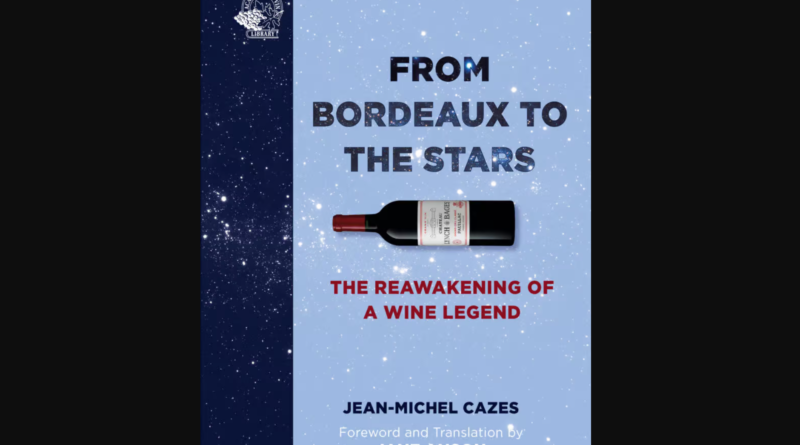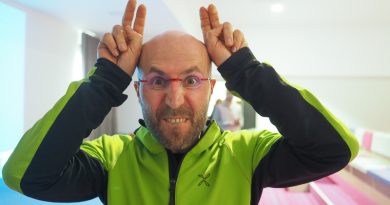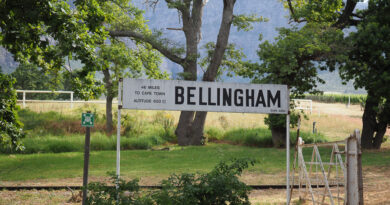Book review: From Bordeaux to the Stars, by J.M. Cazes
I really enjoyed reading From Bordeaux to the Stars, the English translation of Jean-Michel Cazes autobiography, initially published in 2022 as Bordeaux Grands crus – La reconquête. But it left me wanting something more.
Cazes, who died earlier this year aged 88, was something of a rarity: an owner of a leading classed-growth Médoc Château who actually came from the Médoc. Back in the day, his family owned a bakery in Pauillac, and remarkably (from today’s standpoint) in 1939 his grandfather purchased, at a knockdown price, Château Lynch Bages in Pauillac, and a year later, Château Les Ormes de Pez in St Estèphe. This was an awful time for many owners in the Médoc, of course, and things didn’t really pick up economically for quite a while.
Cazes already had a successful career as a salesperson for IBM when in 1973, on the death of his grandfather, he moved back to the Médoc, aged 38, to take over his family’s insurance company and wine interests. This was a low point for the Bordeaux region, but for Lynch-Bages, the future was bright from this point, if not completely plain sailing. [As an aside, in 2006 my brother-in-law bought a few bottles of the 1973 Lynch Bages, Cazes’ debut year. We drank some together. It was pretty terrible. But in those days there still were a lot of bad vintages in the region: great wines then were accidents, as one Château owner told me a few years ago.]
Cazes’ second career as a proprietor (for a long time he was doing this as well as running the insurance company) turned out to be a stellar one. Having studied in the US and worked outside wine for major corporations, he added valuable experience to his evident smartness, and coming back to Bordeaux after a 20-year absence allowed him to bring fresh perspective. He turned the fortunes of the family properties around, with carefully sourced investments, some shrewd staff hires and a tireless appetite for promotional work – both on behalf of his Châteaux and also the region of Bordeaux more generally. From the early 1980s there was a lot of international attention focused on the region, so to have an ambassador like Cazes travelling was a great asset to Bordeaux. Then, in 1987 he took over the wine division of AXA, which initially involved Château Pichon Baron but then later included top estates not only in Bordeaux, but also Portugal and Hungary. In 2001, mandatory retirement from AXA at 65 meant that he passed the role over to Christian Seely, who had been working since 1993 turning round the fortunes of Quinta do Noval.
I first came to the Médoc in 2007, a year after Cazes had handed over the family estates to his son. So, as someone who’s managed to avoid the Bordeaux en primeur beat, I never got to meet him. It’s a shame, because from this book, which is full of nice details, he seemed a smart, thoughtful, purposeful man who had lived through Bordeaux’s most amazing transition from a region in the doldrums to the success story that the Médoc is today.
In the book there are some interesting snippets almost hidden away. In a chapter on wine critic Robert Parker (Cazes respected him highly but didn’t like his tendency to form strong opinions on wines from unfinished samples, thought his criticisms sometimes harsh, and seemed to be lukewarm to Parker’s fondness for garagistes), Cazes remarks how he’d chosen not to wear his Legion d’Honneur (the top French civil and military honour akin to a knighthood in the UK) out of modesty, but when Parker noted that he wasn’t wearing it (Parker was also a recipient and wore his proudly) Cazes had the little red ribbon sewn into all his suits. Then there’s a chapter on the various collaborations Cazes made (or was about to make) which went wrong, including failed collaborations with partners in California and Argentina, and the Tapanappa collaboration in Australia which didn’t really go to plan.
But perhaps what is most fascinating is the way he brought Lynch Bages into the modern era, in the context of much-needed changes in the vineyard and winery. When Cazes arrived, the cellar was still in its 19th century configuration, and winemaking was also stuck in the previous century. He recalled how after the fermentation vats were loaded, they were ‘plastered over’, with a couple of holes left for carbon dioxide to escape, and just left, while everyone went hunting. It was the ultimate in low intervention vinification.
So it’s a detailed account of the working life of one of the most important and well-loved figures in Bordeaux: what more did I want? To be honest, this is a book that could have benefited from a ghost writer or a fully involved editor. Cazes is not a naturally flowing writer, and much of the text is a simple narrative with what happened, who was there, and what came next. So many sentences end in ellipses. The opening section in particular is a list of names and dates, and takes a while to get going. If you aren’t familiar with the cast of characters, as the account progresses there is a relative lack of colour and human interest. If you’ve been following Bordeaux professionally, for many years, you’ll have met many of the people listed, and you can add your own colour, but to a Bordeaux outsider, much of the detail is arcane. I just wished we had more of what Cazes actually felt; what these experiences were really like to him; something a bit more personal. What made him get up in the morning? What did he hate? What went on inside him during the well documented legal issues that Lynch Bages faced? An editor or ghost writer could have dragged more of this content from him, and that would succeed in dragging the readers in deeper.
[This is the latest publication from the Académie du Vin Library, who are currently extremely active. The book is perhaps heavier than it needs to be: in an age where bottle weights are under scrutiny, perhaps books shouldn’t be overweight either. And the production values are slightly amiss: On four pages (164, 204, 226, 254) there are short sections of text in bold type, which are presumably unaddressed editorial queries. And the page numbering starts from the beginning of the front matter. These aren’t huge issues, but a book of this importance deserves more editorial attention.]
To buy this book (these are affiliate links):




